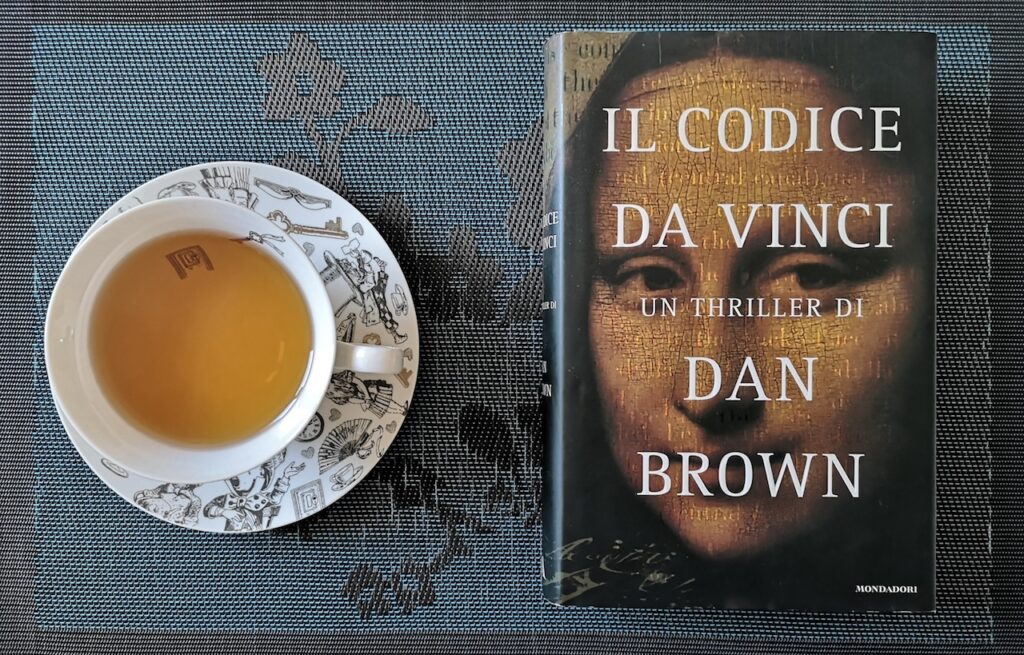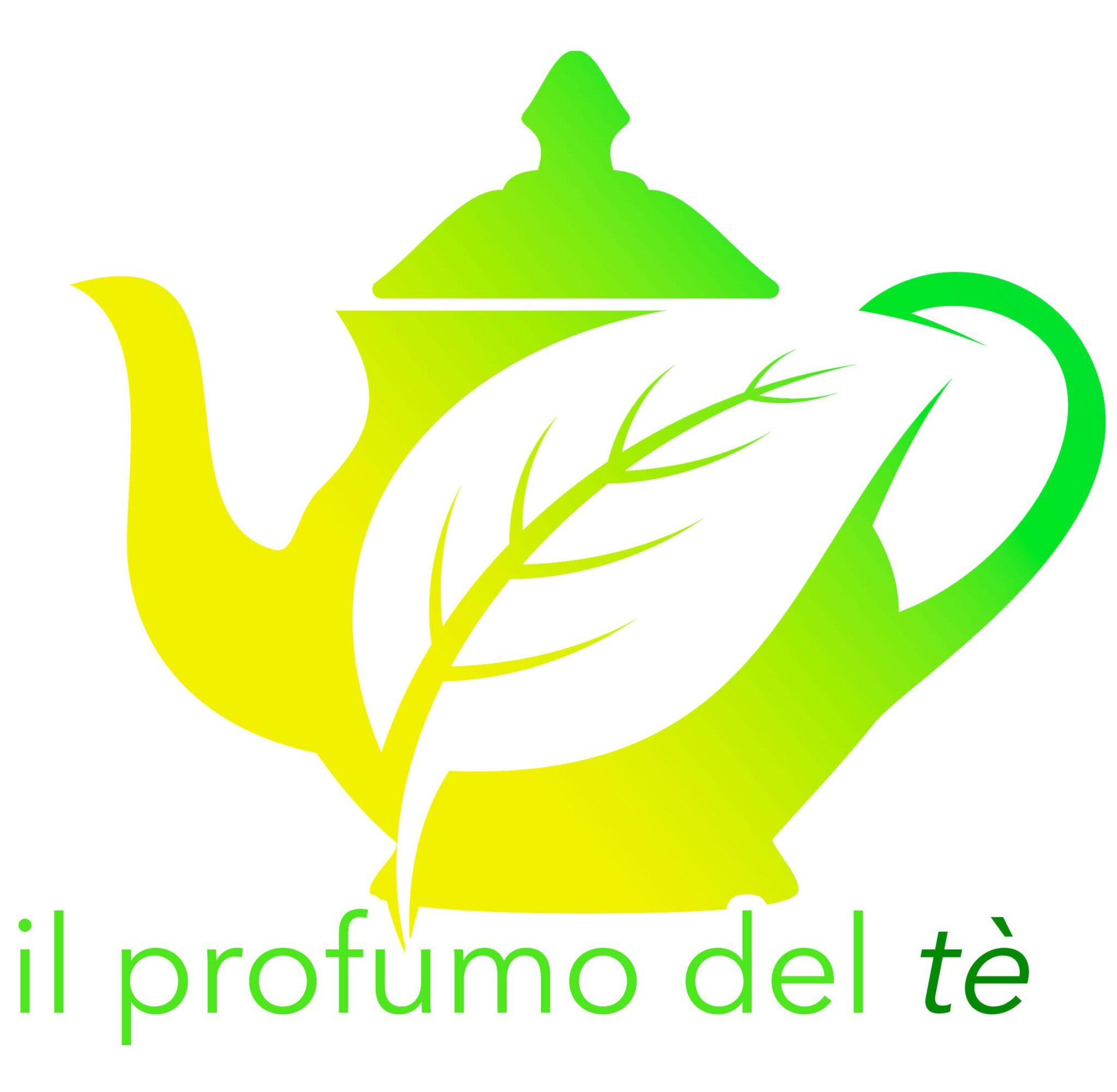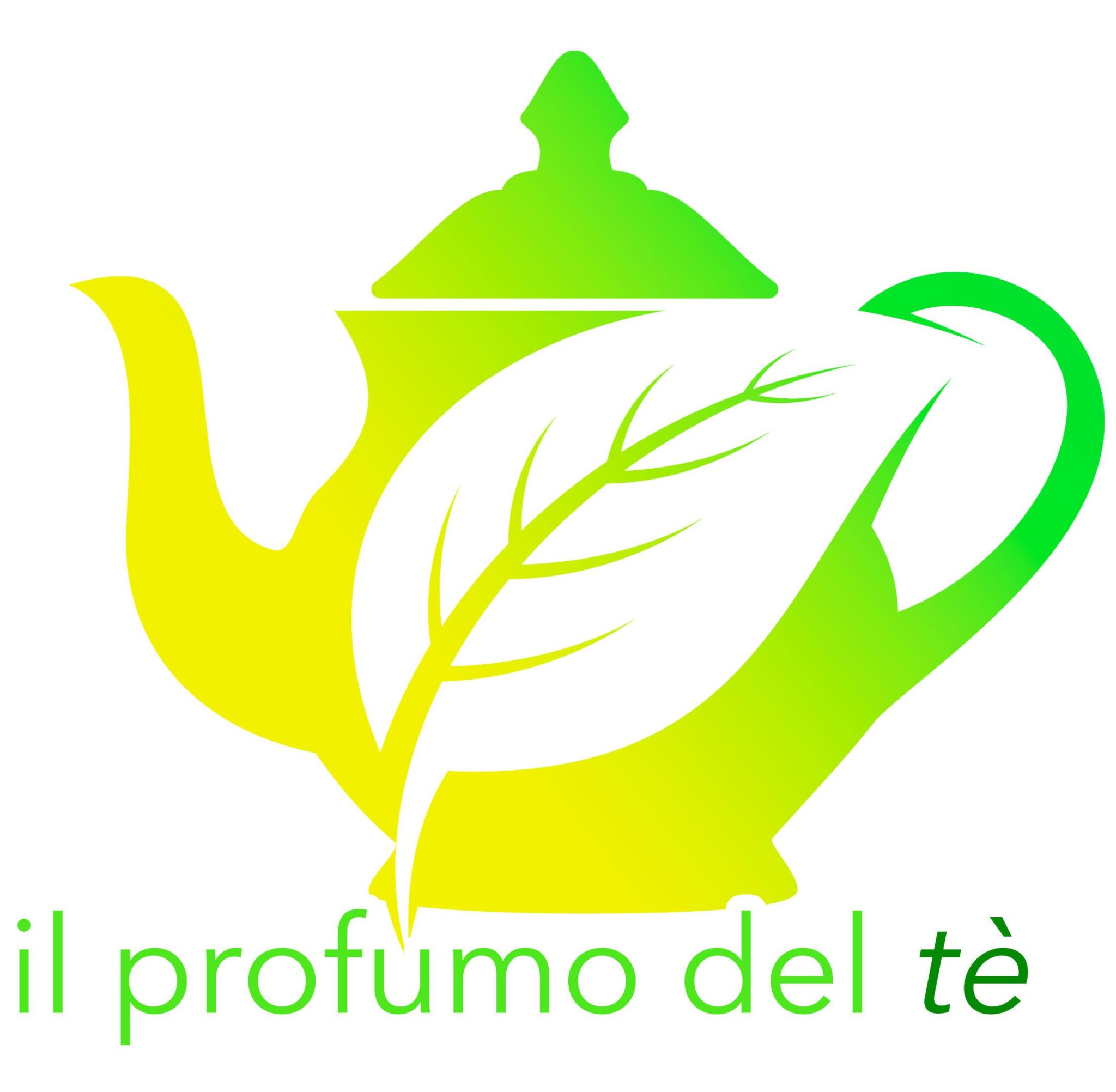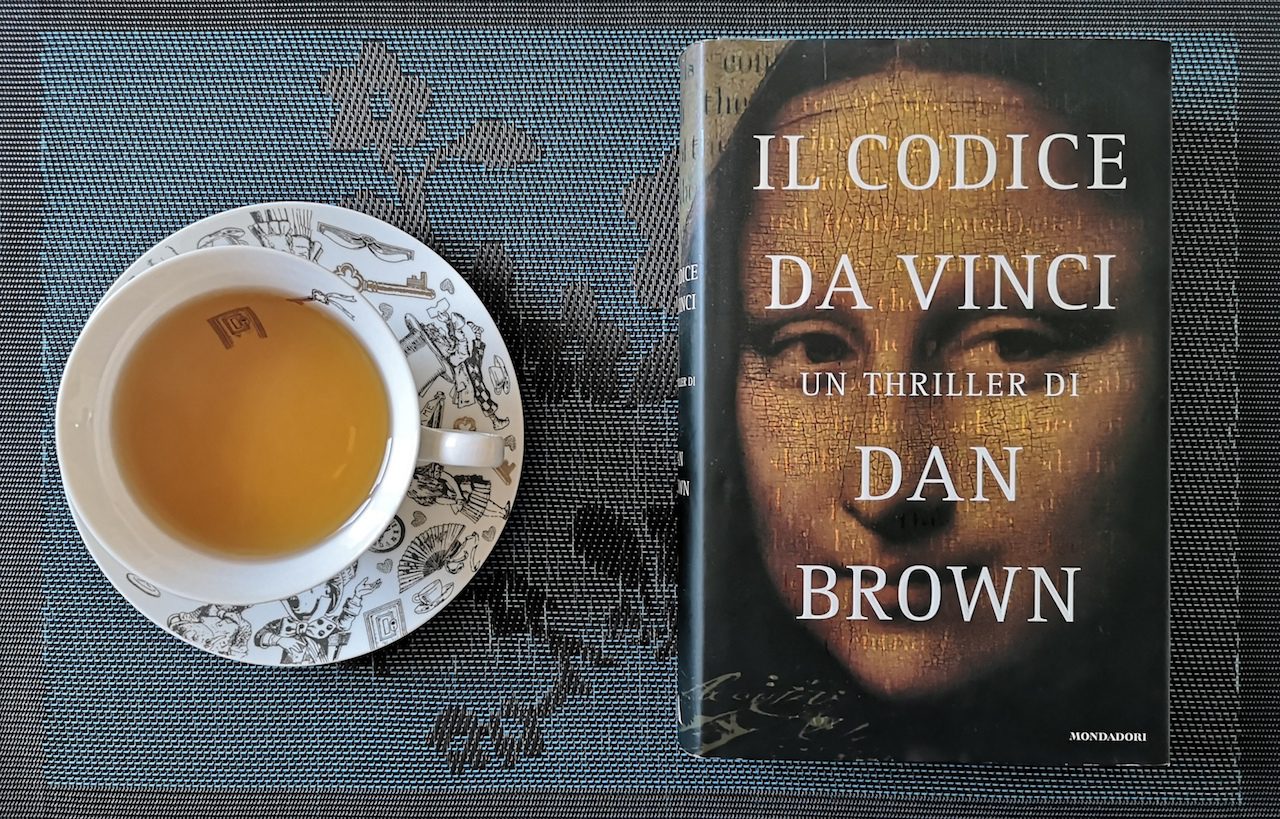Non che questo sia un libro o un film tipicamente natalizio, ma è sempre un piacevole thriller da leggere e rivedere. Inoltre c’è un bellissimo capitolo sul tè, quindi non poteva mancare tra gli articoli di questo blog.
Il Codice da Vinci di Dan Brown edito da Mondadori nel 2003 è sicuramente un giallo incalzante misto a esoterismo, simbologia, religione, arte e spiritualità, storia, cultura e luoghi realmente esistenti, che dimostra come la scienza si mescola al divino e alla leggenda. Purtroppo non possiedo più la versione illustrata ormai limitatissima, ma ne ho ritrovata un’altra copia cartonata in ottime condizioni e l’ho riletto molto volentieri.
Il romanzo ebbe all’epoca molto successo, così come il film uscito nel 2006 e diretto da Ron Howard (lo ricordiamo da giovanissimo in Happy Days e American Graffiti). Ambientato prevalentemente in Francia, ma anche in parte in Inghilterra e Scozia, è stato interpretato da un cast stellare con Tom Hanks protagonista nel ruolo dello studioso Robert Langdon, Paul Bettany nel serial killer Silas (che ritroveremo in seguito tra gli Avengers della Marvel), Jean Reno tra gli attori francesi.
Le musiche riconoscibilissime, sono di Hans Zimmer di cui ho visto un concerto candlelight in piacevole compagnia non molto tempo fa.
Ogni personaggio sia nel libro che nella pellicola è ben strutturato. In particolare Robert, Silas e Sophie hanno subito traumi passati, che li rendono ciò che sono all’interno della storia. Ognuno di loro viene messo a confronto con le proprie più profonde paure, fino a trovare il proprio destino di vita.
Come dice Robert Langdon: “Capire il passato ci permette di comprendere il presente.”
Anche qui la teoria del Viaggio dell’Eroe di Joseph Campell è molto attuale, così come la capacità di leggere simboli ed archetipi di varie culture.
Gli archetipi qui sono potenti, in particolare il richiamo tra l’eterna lotta tra cristianesimo e paganesimo e al sacro femminile.
Ci sono moltissimi richiami all’arte, in particolare quella di Leonardo da Vinci, dalla Gioconda alla Vergine delle Rocce, fino all’Ultima Cena.
Ho avuto la fortuna di amare molto l’arte e di studiarla all’università, in seguito ho continuato a coltivare questa passione recandomi a qualche mostra ogni tanto. Non ho mai avuto la fortuna di visitare il Louvre, ma è sicuramente tra i luoghi in cui un giorno mi piacerebbe andare.
Per chi ama la storia c’è un forte richiamo ai Templari, protettori del Graal, ma anche della leggenda sulla Maria Maddalena, quale unica sposa di Cristo.
Purtroppo non ho più l’edizione in DVD con il Cryptex, i memorabilia sono sempre stati un’altra mia passione fin da ragazzina.
Ma veniamo al tè, vi ricordate in quale scena e capitolo compare per voi amanti del cinema e della lettura?
Robert e Sophie si recano a Chateaux Villette, per incontrare uno storico inglese del Graal (nel film interpretato da Ian McKellen) Sir Leigh Teabing. Interessante come il cognome cominci proprio con la parola Tea che significa tè, e come l’indovinello che pone ai protagonisti sia proprio inerente a questa nota bevanda.
– Caffè o Tè?
– Tè
– Latte o Limone?
– Earl Grey (aromatizzato in realtà al bergamotto che è sempre agrumato).
Spendiamo qualche parola su questo noto infuso.
Il primo tè arriva a Londra nel 1650 su navi olandesi. L’Earl Grey deve il suo nome al Conte Earl Charles Grey che fu Primo Ministro Inglese dal 1830 al 1834.
Si tratta di una tipologia di tè nero aromatizzato all’olio essenziale di bergamotto di Calabria, composto da miscele di tè neri cinesi.
Lo ritroviamo anche in altri testi come in “Vita con LLOYD – I miei giorni assieme a un Maggiordomo” di Simone Tempia edito da Rizzoli con le illustrazioni dello scomparso Tuono Pettinato.
“Lloyd…”
“Sì, sir”
“Questa non è la tazza di fredda rassegnazione che ti avevo chiesto”
“No, sir”
“E cos’è?”
“E’ un infuso di pazienza, perseveranza e bergamotto, sir”
“Sai che ha un sapore decisamente migliore?”
“Sono contento che le piaccia, sir”
“Sempre impeccabile, Lloyd”
“Grazie mille, sir”
In sostanza questi maggiordomi pronti a consigliare e ristorare i protagonisti con un buon infuso di Earl Grey si trovano un po’ dappertutto dalla letteratura, al fumetto fino al cinema.
Sarà proprio davanti a questo rinomato tè inglese, che parleranno a lungo della leggenda del Graal e dei simboli lasciati nel tempo da Leonardo da Vinci, che riconducono alla Maria Maddalena, compagna di Gesù, colei che portava in grembo il sangue reale (sang-real) e la sua stirpe a venire.
Si tratta di argomenti tutt’oggi molto validi, come le guerre che da sempre nascono dalle divergenze relative a rispettivi credi e religioni.
“Si è sempre ucciso nel nome di Dio da quando ce n’è uno solo.”
Diverso quando ancora c’era il paganesimo che lasciava libertà di culto. Sappiamo anche che il sacro femminile veniva venerato come tale, pertanto il Cristianesimo demonizzò la donna che apportava guarigione, cultura e potenzialità innate al fine di sottometterla al volere di un unico Dio. Erroneamente il simbolo pagano del pentacolo ripreso da Leonardo da Vinci nell’Uomo Vitruviano, fu volutamente confuso col demonio, mentre in realtà non aveva nulla a che vedere con esso. Nel paganesimo la donna era venerata, ma allo stesso tempo aveva un rapporto alla pari con l’uomo senza sottomissioni.
Da qui il simbolo delle piramidi con la punta verso l’alto per il maschile e con la punta verso il basso per il femminile, a indicare lama e calice, ovvero l’eterna unione tra i due opposti che rappresentano allo stesso tempo l’umano e il divino.
Il femminile così come il Graal sono spesso associati al simbolo della rosa. Così la Via della Rosa a Parigi, porta proprio sotto la piramide del Louvre dove termina il viaggio di Robert Langdon.

Il Codice da Vinci di Dan Brown edito da Mondadori nel 2003 – Photo@Veru
“The Da Vinci Code” – between art, symbols, myth and tea

Not that this is a typical Christmas book or movie, but it is always a pleasant thriller to read and re-read. In addition, there is a beautiful chapter on tea, so it could not be missing from the articles of this blog.
The Da Vinci Code by Dan Brown published by Mondadori in 2003 is certainly a fast-paced mystery mixed with esotericism, symbolism, religion, art and spirituality, history, culture and real places, which demonstrates how science mixes with the divine and legend. Unfortunately, I no longer own the illustrated version, now very limited, but I found a hardback copy in excellent condition and I reread it very willingly.
The novel was very successful at the time, as was the film released in 2006 and directed by Ron Howard (we remember him as a young man in Happy Days and American Graffiti). Set mainly in France, but also partly in England and Scotland, it was interpreted by a stellar cast with Tom Hanks as the protagonist in the role of the scholar Robert Langdon, Paul Bettany in the role of the serial killer Silas (who we will find again later among the Marvel Avengers), Jean Reno among the French actors.
The highly recognizable music is by Hans Zimmer, of whom I saw a candlelight concert in pleasant company not long ago.
Each character in both the book and the film is well-structured. In particular, Robert, Silas and Sophie have suffered past traumas, which make them what they are in the story. Each of them is confronted with their deepest fears, until they find their own destiny in life.
As Robert Langdon says: “Understanding the past allows us to understand the present.”
Here too, Joseph Campell’s theory of the Hero’s Journey is very present, as is the ability to read symbols and archetypes of various cultures.
The archetypes here are powerful, especially the reference to the eternal struggle between Christianity and paganism and to the sacred feminine.
There are many references to art, especially that of Leonardo da Vinci, from the Mona Lisa to the Virgin of the Rocks, to the Last Supper.
I was lucky enough to love art a lot and study it at university, later I continued to cultivate this passion by going to some exhibitions every now and then. I have never been lucky enough to visit the Louvre, but it is certainly among the places I would like to go to one day.
For those who love history there is a strong reference to the Templars, protectors of the Grail, but also of the legend of Mary Magdalene, as the only bride of Christ.
Unfortunately I no longer have the DVD edition with the Cryptex, memorabilia have always been another passion of mine since I was a little girl.
But let’s get to tea, do you remember in which scene and chapter it appears for you lovers of cinema and reading?
Robert and Sophie go to Chateaux Villette, to meet an English historian of the Grail (in the film played by Ian McKellen) Sir Leigh Teabing. Interesting how the surname begins with the word Tea which means tea, and how the riddle he poses to the protagonists is precisely inherent to this famous drink.
– Coffee or Tea?
– Tea
– Milk or Lemon?
– Earl Grey (actually flavored with bergamot which is always citrusy).
Let’s spend a few words on this well-known infusion.
The first tea arrived in London in 1650 on Dutch ships. Earl Grey owes its name to Count Earl Charles Grey who was English Prime Minister from 1830 to 1834.
It is a type of black tea flavored with Calabrian bergamot essential oil, composed of blends of Chinese black teas.
We also find it in other texts such as “Life with LLOYD – My days together with a Butler” by Simone Tempia published by Rizzoli with illustrations by the late Tuono Pettinato.
“Lloyd…”
“Yes, sir”
“This is not the cup of cold resignation I asked you for”
“No, sir”
“And what is it?”
“It’s an infusion of patience, perseverance and bergamot, sir”
“Do you know that it tastes much better?”
“I’m glad you like it, sir”
“Always impeccable, Lloyd”
“Thank you very much, sir”
Basically these butlers ready to advise and restore the protagonists with a good infusion of Earl Grey can be found a bit everywhere from literature, to comics to cinema.
It will be in front of this renowned English tea, that they will talk at length about the legend of the Grail and the symbols left over time by Leonardo da Vinci, which lead back to Mary Magdalene, companion of Jesus, the one who carried in her womb the royal blood (sang-real) and his lineage to come.
These are still very valid arguments today, like the wars that have always arisen from differences regarding respective beliefs and religions.
“He has always killed in the name of God since there was only one.”
Different when there was still paganism that allowed freedom of worship. We also know that the sacred feminine was venerated as such, therefore Christianity demonized the woman who brought healing, culture and innate potential in order to submit her to the will of a single God. Erroneously the pagan symbol of the pentacle taken from Leonardo da Vinci in the Vitruvian man, was deliberately confused with the devil, while in reality it had nothing to do with it. In paganism the woman was venerated, but at the same time had an equal relationship with the man without submission.
Hence the symbol of the pyramids with the tip pointing upwards for the masculine and with the tip pointing downwards for the feminine, to indicate blade and chalice, or the eternal union between the two opposites that represent at the same time the human and the divine.
The feminine as well as the Grail are often associated with the symbol of the rose. So the Rose Route in Paris leads right under the Louvre pyramid where Robert Langdon’s journey ends.



No responses yet